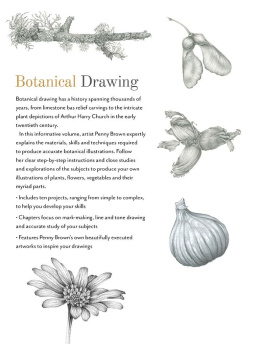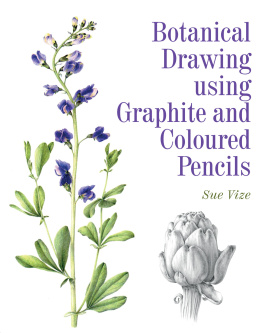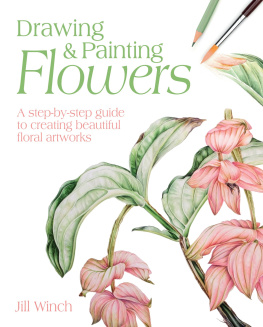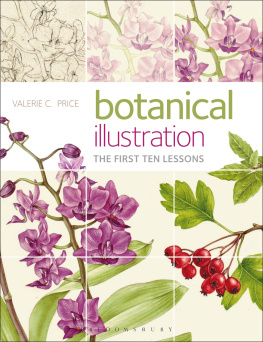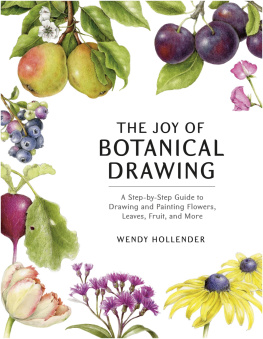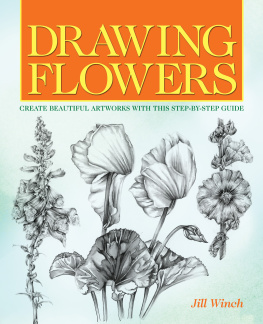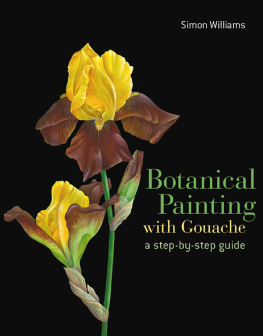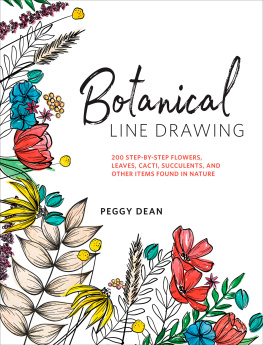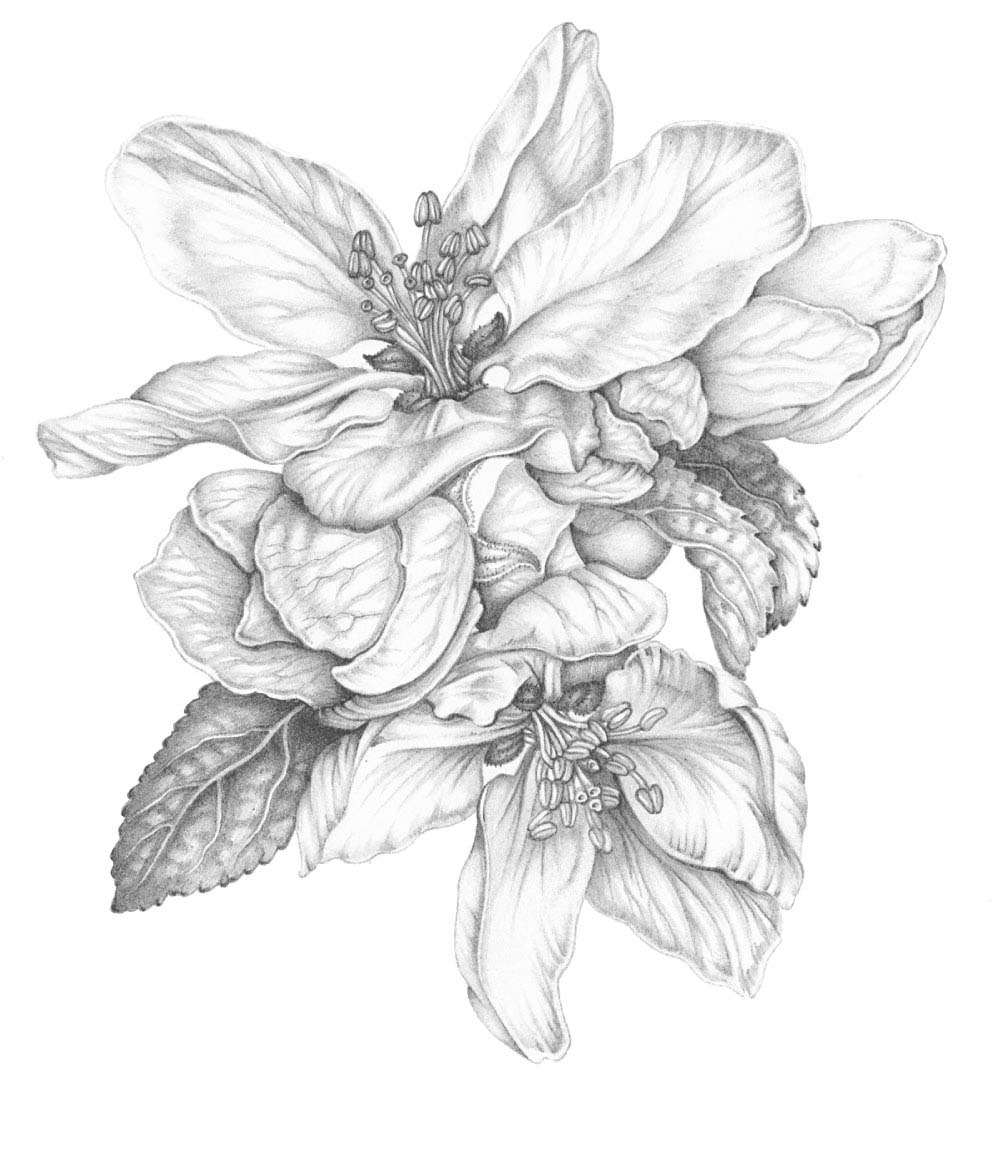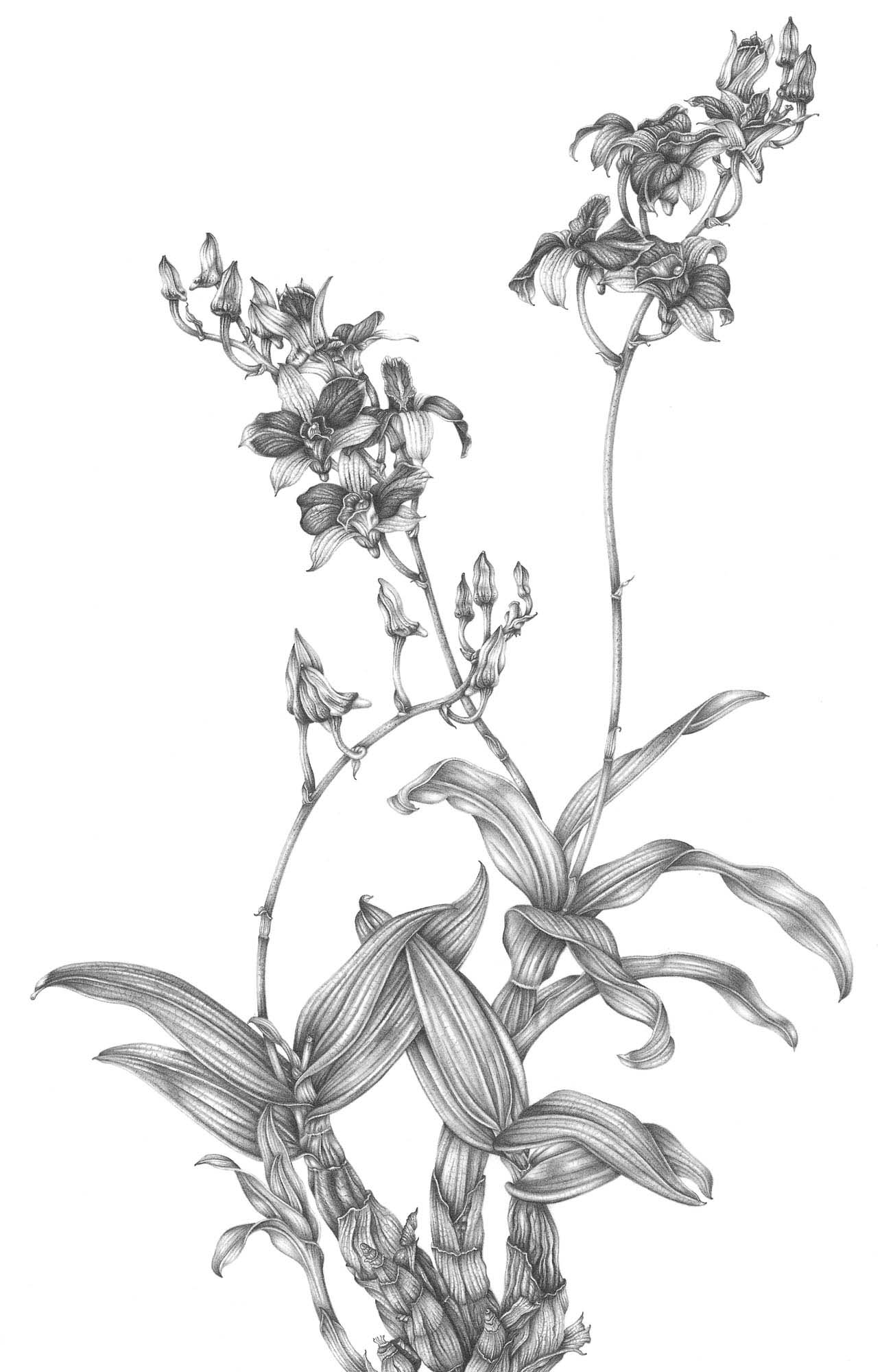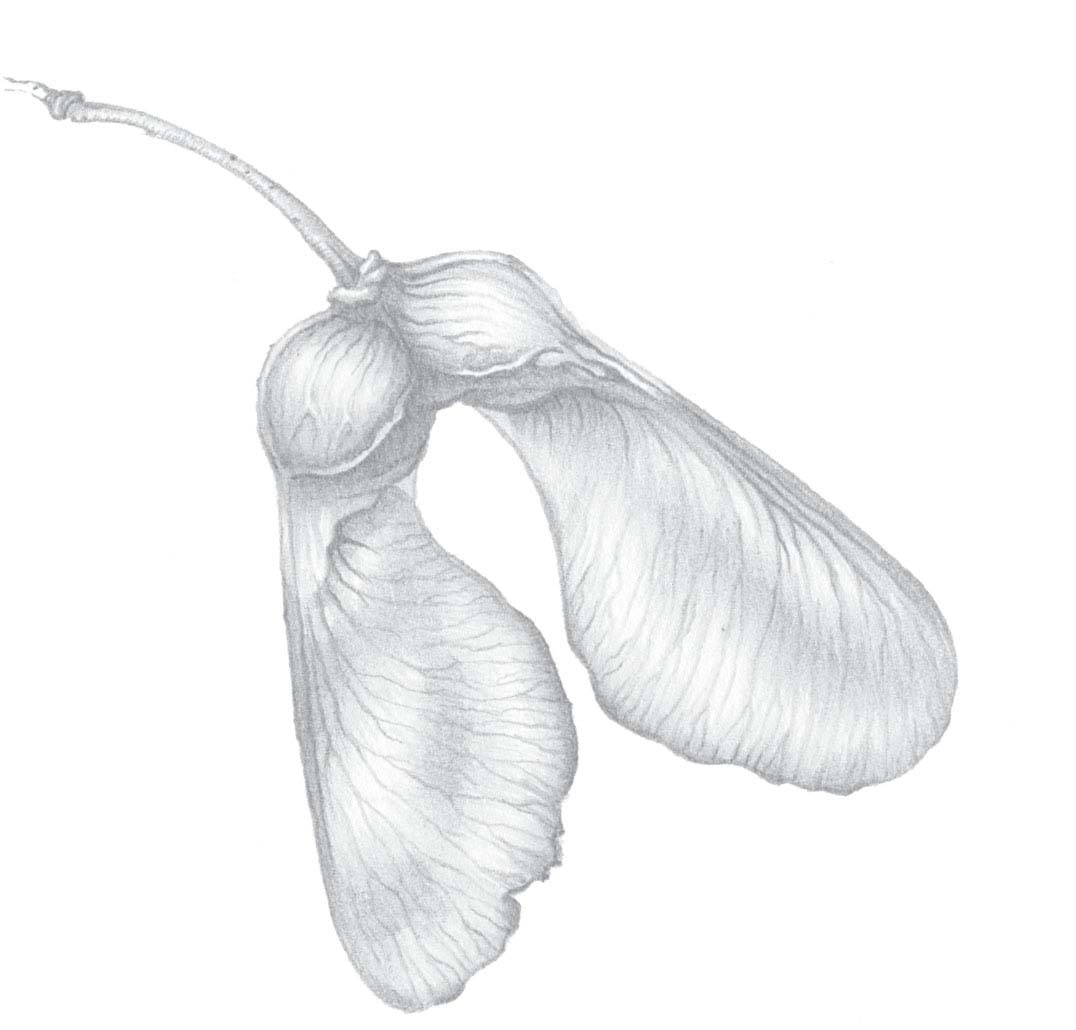Pagebreaks of the print version

PENNY BROWN trained and worked as
a theatre designer for ten years before an
increasing love of painting and drawing
led her to illustration. She works in
watercolour, graphite and most recently,
cut paper collage. She has illustrated
many books on craft, textiles, design,
natural history and gardening.
Penny exhibits her botanical
paintings and drawings with the
Society of Botanical Artists in London,
Frankfurt and Spain. She has won
several awards including the prestigious
Presidents Prize at the SBA exhibition.
She is also a member of the
South West Society of Botanical
Artists in the UK, and opens her studio
regularly for art weeks. She looks
forward to continuing her parallel
careers in botanical art and illustration.
Botanical Drawing touches on the history
of this fascinating art form, its rules
and practicalities, and includes an
accessible, basic study of botany for the
absolute beginner.
The aim of this book is to give you the
confidence and enthusiasm to tackle your
own projects, to show you how broad
a subject botanical drawing is, and how
satisfying and enjoyable it can be.
Study nature diligently, be guided by
nature for truly art is hidden in nature
and he who can draw it out possesses it.
Albrecht Drer
BOTANICAL DRAWING
Dedication
To Tim and our children, Eleanor and Sam.
PENNY BROWN
BOTANICAL DRAWING
A STEP-BY-STEP GUIDE TO DRAWING FLOWERS, VEGETABLES, FRUIT AND OTHER PLANT LIFE
ACKNOWLEDGEMENTS
Thank you to my editor, Beth Harwood, for all her
help and encouragement, and to Katie French
at Search Press. Thank you also to friends and
colleagues who have been generous with their
ideas and advice, in particular Margaret Tebbs,
who checked the specific botanical pages
for accuracy.
Lastly, thank you to the natural world for providing
such an abundance of subject matter!
Page 1
Dendrobium Dancing Flora Bamboo Orchid
Orchids make good subjects to draw as they are long
lasting. I start by drawing the buds, as they open and
change first, then work my way up the stem, drawing the
open flowers. I love the contrasting dark and light petals
on each flower and the curving twists of the leaves.
297 420mm (11 16in) hot-pressed watercolour paper.
Full range of graphite pencils.
Page 2
Echinacea Cone Flower
This enlarged study of the opening bud of an echinacea
flower relies on three different areas of pattern to achieve
the composition. The tightly packed ranks of developing
stamens at the centre of the bud are encircled by the
spiky, elongated forms of the unfolding petals. These both
emerge from the curving, spiny sepals. Enlarging the bud
gives it a sculptural almost architectural quality.
297 420mm (11 16in) hot-pressed watercolour paper.
Full range of graphite pencils.
Page 3
Phalaenopsis Moth Orchid
See page 75.
297 420mm (11 16in) hot-pressed watercolour paper.
Full range of graphite pencils.
First published in 2018
Search Press Limited
Wellwood, North Farm Road,
Tunbridge Weils, Kent TN2 3DR
Illustrations, photographs and text copyright
Penny Brown 2018; except page 37 (top) copyright
Search Press Ltd 2018
Design copyright Search Press Ltd. 2018
All rights reserved. No part of this book, text, photographs or
illustrations may be reproduced or transmitted in any form
or by any means by print, photoprint, microfilm, microfiche,
photocopier, internet or in any way known or as yet unknown,
or stored in a retrieval system, without written permission
obtained beforehand from Search Press.
Print ISBN: 978-1-78221-260-7
eBook ISBN: 978-1-78126-611-3
The Publishers and author can accept no responsibility for
any consequences arising from the information, advice or
instructions given in this publication.
Suppliers
If you have difficulty in obtaining any of the materials and
equipment mentioned in this book, then please
visit the Search Press website for details of suppliers:
www.searchpress.com
INTRODUCTION
I firmly believe that drawing is supremely important, and the bedrock of all art. As a direct and immediate response to a subject, a drawing often comes alive, with a raw energy of its own. Drawing is also extremely enjoyable and satisfying, and can result in images with a distinctly contemporary feel.
However, there is much more to it than that: an under-drawing may provide the basis and structure for a painting; a quick sketch made in the field can provide essential information to work from later, or can capture perhaps better than any other medium the feel and character of a subject. A drawing can be a finished work of art in its own right, conveying the subject with as much interest and skill as a painting. With so much visual stimulation available to us nowadays, it is pleasing to see that there is an increasing fascination with drawing for its own sake.
Botanical drawing has a long history. Early plant hunters had to make detailed line drawings, including dissections, of new specimens. These drawings were archived, and are today considered invaluable as scientific documents. On the pages overleaf, I present a consideration of the history of botanical drawing; ultimately, though, my focus throughout this book is on botanical drawing as a way of making accurate, yet pleasing and decorative, images.
Within this volume, you will find a section on the materials and equipment required for botanical drawing, and the potential use of technology such as tablets and digital cameras. I have included simple exercises to familiarise you with graphite pencils; to encourage you to experiment with line and tone and to draw from life. Indeed, observation and learning to really look at your subject are primary drawing skills. I discuss the importance of composition: how to approach and lay out your subjects to create compositions that are vigorous and exciting but stay true to the individual character and nature of the subject itself.

